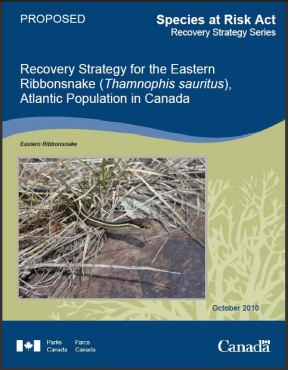
The population objective identified in the strategy is to achieve "a self-sustaining population of eastern ribbonsnakes with a 95% probability of persistence across its current range". The goals are being addressed through a combination of communication and stewardship, research, habitat management and monitoring.
The document outlines six broad strategies:
-
Achieve conservation of currently known critical habitats and new habitats are they are identified, though stewardship, land acquisition, and management actions.
-
Overcome challenges in conducting research in this small, cryptic species to gain a better understanding of population dynamics and habitat use.
-
Determine the extent of the range in Nova Scotia and the population structure, abundance, and trends within that range in order to identify the appropriate scales for recovery.
-
Identify habitat features used for each life stage and activity, and determine if they are limiting.
-
Identify population threats, evaluate their significance and take steps to mitigate those threats.
- Develop long-term monitoring protocols and techniques to evaluate the success of recovery actions.
For more information, please see the Species at Risk Public Registry.
1 Parks Canada Agency. 2012. Recovery Strategy for the Eastern Ribbonsnake (Thamnophis sauritus), Atlantic Population in Canada. Species at Risk Act Recovery Strategy Series. Parks Canada Agency, Ottawa. x+46pp.


